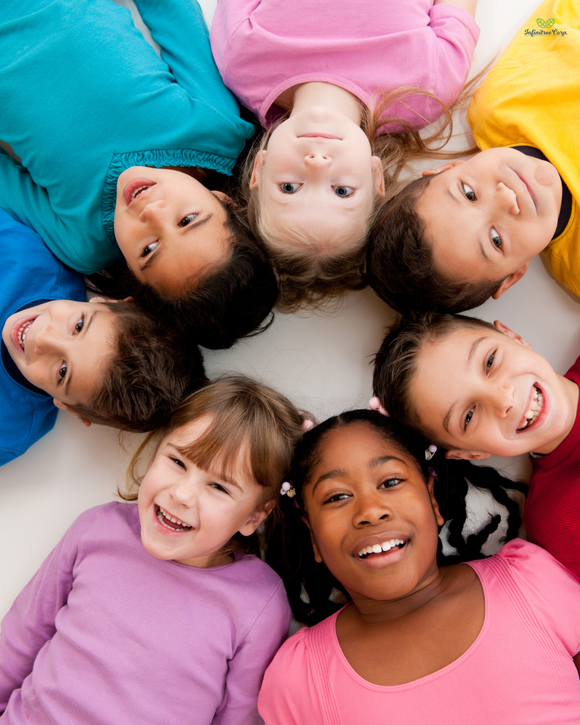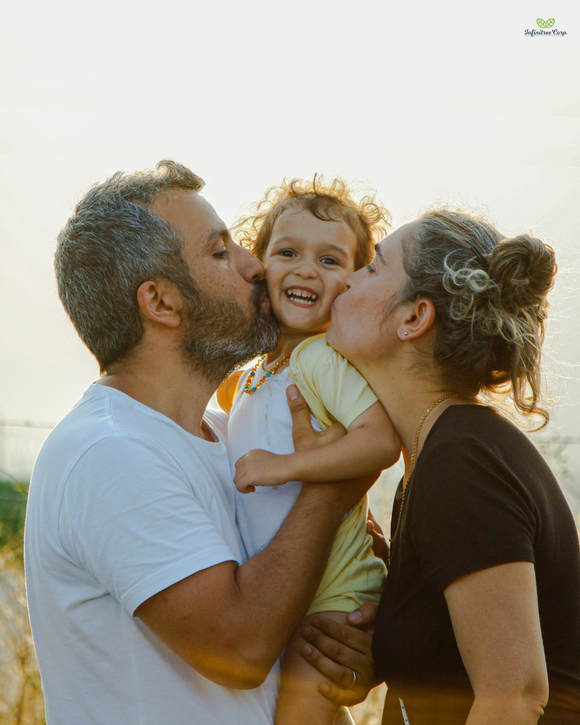
Teaching Kids Mindfulness to Support Emotional and Physical Growth
InfinitreeEditor.Jo
Teaching Kids Mindfulness to Support Emotional and Physical Growth
A Simple Breathing Exercise That Changed Everything
One evening, my son came home from school feeling frustrated. A difficult test, a disagreement with a friend, and a long day of activities had left him overwhelmed. Instead of reacting with stress, I sat beside him and said, “Let’s take three deep breaths together.” We inhaled slowly, exhaled deeply, and within minutes, I saw his shoulders relax.
This simple moment of mindfulness helped him manage his emotions, and over time, I realized that practicing mindfulness not only improved his emotional well-being but also supported his physical health and overall growth.
Kids Are More Stressed Than Ever
In today’s fast-paced world, children experience:
- Increased Academic Pressure: Homework, exams, and expectations can create stress.
- Overstimulation from Screens: Digital distractions can reduce focus and increase anxiety.
- Limited Physical Awareness: Many kids struggle with body awareness, leading to poor posture, sleep issues, and tension.
Without effective coping mechanisms, stress can negatively impact growth, immune function, and emotional stability. Mindfulness offers a simple yet powerful way to help kids regulate their emotions, stay present, and support their physical development.
How Mindfulness Supports Emotional and Physical Growth
-
Reduces Stress and Anxiety
- Deep breathing lowers cortisol (the stress hormone), promoting relaxation and emotional balance.
-
Enhances Focus and Cognitive Function
- Mindfulness strengthens the prefrontal cortex, improving concentration and problem-solving skills.
-
Supports Physical Growth
- Chronic stress can slow growth by disrupting sleep and hormone production. Mindfulness encourages relaxation, aiding healthy development.
-
Encourages Better Sleep
- Practicing mindfulness before bed improves sleep quality, which is essential for growth and immune function.
-
Boosts Emotional Resilience
- Teaching kids mindfulness helps them manage emotions, leading to stronger social skills and self-confidence.
The Solution: Simple Mindfulness Techniques for Kids
Mindfulness doesn’t have to be complicated or time-consuming. Here are easy ways to integrate mindfulness into daily life for emotional and physical growth.
1. Deep Breathing Exercises
Why It Helps:
Slow, controlled breathing reduces stress, improves oxygen flow, and promotes calmness.
How to Do It:
- Belly Breathing: Place a hand on the belly, inhale for four seconds, and exhale for four seconds.
- Balloon Breath: Imagine inflating a balloon while inhaling and slowly deflating it while exhaling.
Example:
Before bedtime, encourage your child to do five deep breaths to relax their body and mind.
Pro Tip:
Use a pinwheel or bubble wand to make breathing exercises more engaging!
2. Mindful Body Scans
Why It Helps:
A body scan teaches kids to recognize tension and relax their muscles, supporting physical well-being.
How to Do It:
- Have your child lie down and close their eyes.
- Guide them to focus on each body part, starting from their toes and moving up to their head.
- Ask, “How does your body feel?” and encourage them to release any tension.
Example:
Practice this before bedtime to help with relaxation and better sleep.
Pro Tip:
Use a soft, calming voice or play gentle music in the background.
3. Gratitude Journaling
Why It Helps:
Expressing gratitude shifts focus from stress to positivity, improving emotional well-being.
How to Do It:
- Encourage your child to write or draw three things they’re grateful for each day.
- Discuss these moments during family meals or bedtime.
Example:
A child might write, “I’m grateful for my best friend,” or “I loved playing soccer today.”
Pro Tip:
Use a colorful journal or sticker rewards to make it more exciting!
4. Mindful Movement (Yoga & Stretching)
Why It Helps:
Yoga and stretching improve flexibility, posture, and relaxation.
How to Do It:
- Introduce simple yoga poses like Tree Pose (for balance) and Child’s Pose (for relaxation).
- Stretch together in the morning to wake up the body.
Example:
After school, do five minutes of stretching to release tension and improve focus for homework.
Pro Tip:
Make it fun by pretending to be different animals—“Let’s stretch like a cat waking up!”
5. Sensory Awareness Games
Why It Helps:
Using the five senses encourages kids to stay present and grounded.
How to Do It:
-
5-4-3-2-1 Technique: Have your child name:
- 5 things they see
- 4 things they hear
- 3 things they feel
- 2 things they smell
- 1 thing they taste
Example:
During a nature walk, pause and ask your child to describe their surroundings using their senses.
Pro Tip:
Use a small bell or chime—ask your child to listen carefully and raise their hand when they no longer hear the sound.
6. Guided Imagery & Visualization
Why It Helps:
Guided imagery helps kids use their imagination to reduce stress and build confidence.
How to Do It:
- Have your child close their eyes and imagine their “happy place.”
- Describe the scene in detail—colors, sounds, smells, and feelings.
Example:
“Picture yourself lying on a warm beach, hearing the waves crash gently.”
Pro Tip:
Use recorded guided meditations for kids to make it more engaging.
Putting It All Together: A Weekly Mindfulness Plan
Monday: Practice deep breathing before school.
Tuesday: Try a short yoga or stretching session.
Wednesday: Do a gratitude journaling activity.
Thursday: Engage in a sensory awareness game.
Friday: Guide your child through a body scan before bed.
Saturday: Go on a mindful nature walk.
Sunday: Reflect on the week’s mindfulness activities and set intentions for the next.
By making mindfulness a consistent habit, kids develop stronger emotional regulation and physical resilience.
Tips for Encouraging Mindfulness
-
Keep It Short & Fun:
- Start with just 1-2 minutes and gradually increase the time.
-
Lead by Example:
- Practice mindfulness yourself so your child sees it as a natural part of daily life.
-
Use Visuals & Props:
- A calming jar (glitter in water) or breathing buddy (a stuffed animal on their belly) makes mindfulness engaging.
-
Be Patient & Positive:
- Mindfulness is a skill that takes time. Encourage effort, not perfection.
Conclusion: A Mindful Path to Growth
Teaching mindfulness to kids isn’t just about managing stress—it’s a powerful tool for supporting emotional balance, focus, and physical health. By incorporating simple mindfulness techniques into daily routines, children develop the skills to handle challenges, build confidence, and grow both mentally and physically.
Pair mindfulness with a balanced diet and Opti-up Alpha Plus to ensure your child’s body and mind receive the nutrients they need to thrive. Let’s help our kids find calm, strength, and resilience—one mindful breath at a time!
Disclaimer: This article is for informational purposes only and does not constitute medical advice. Please consult your healthcare provider before making significant dietary changes or introducing new supplements to your child’s routine.






